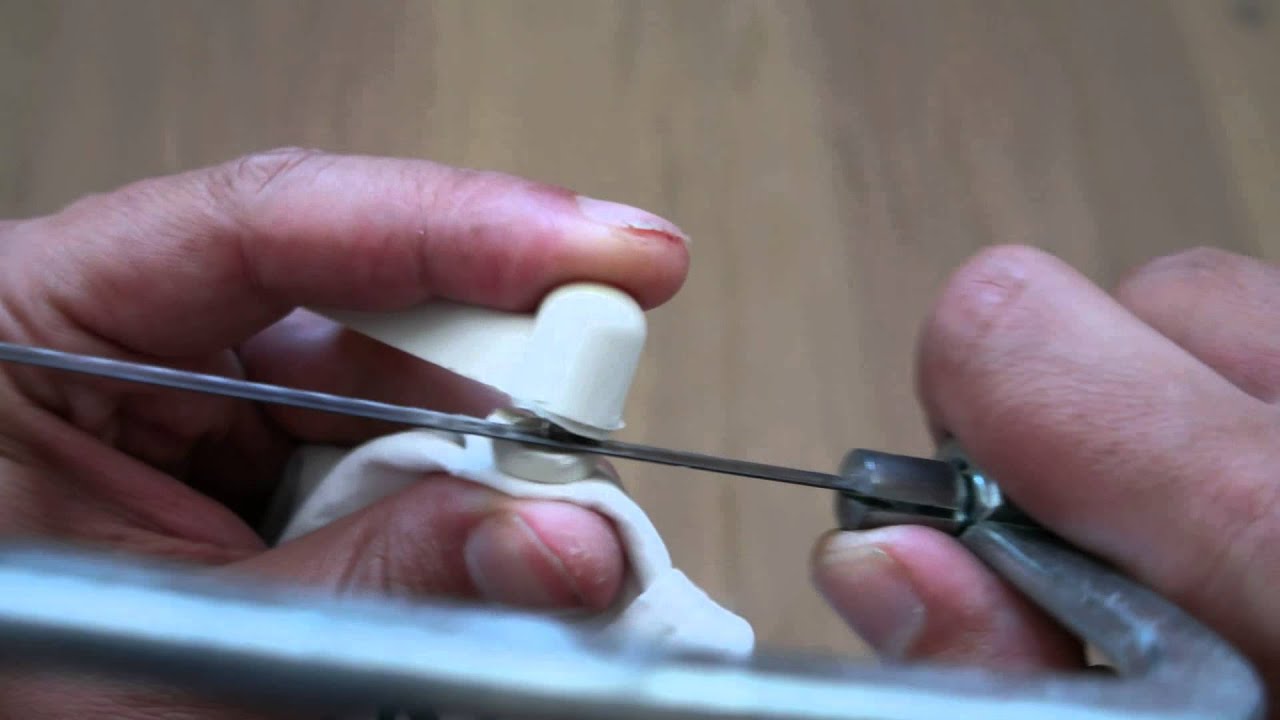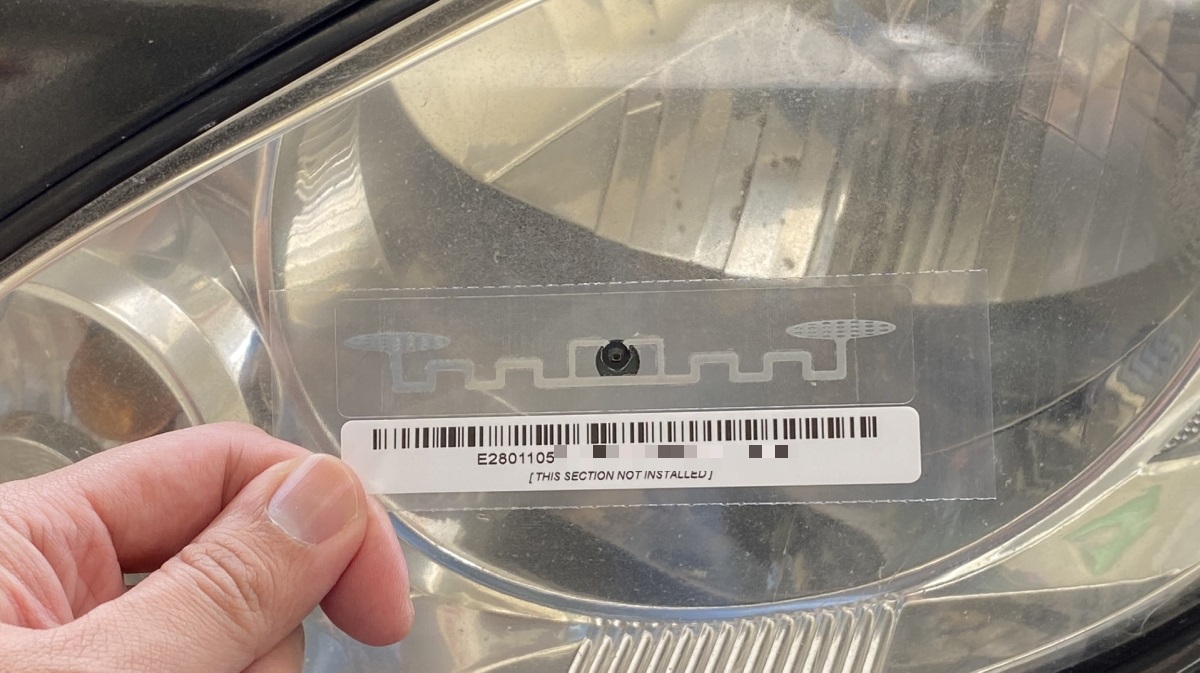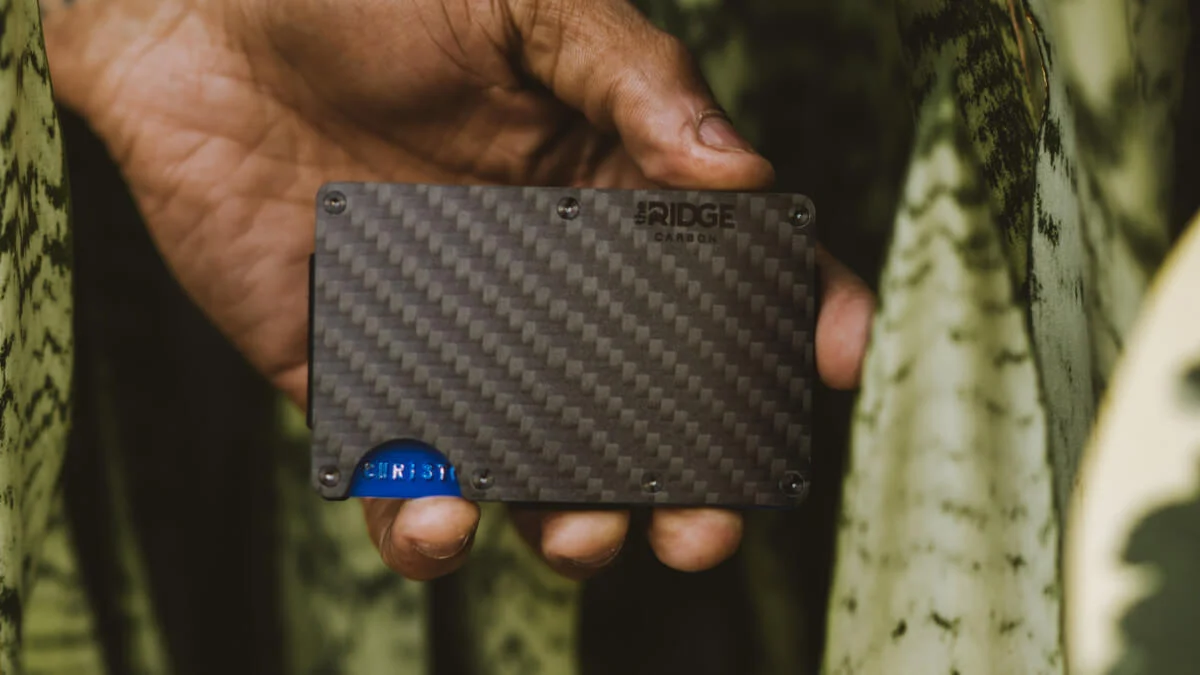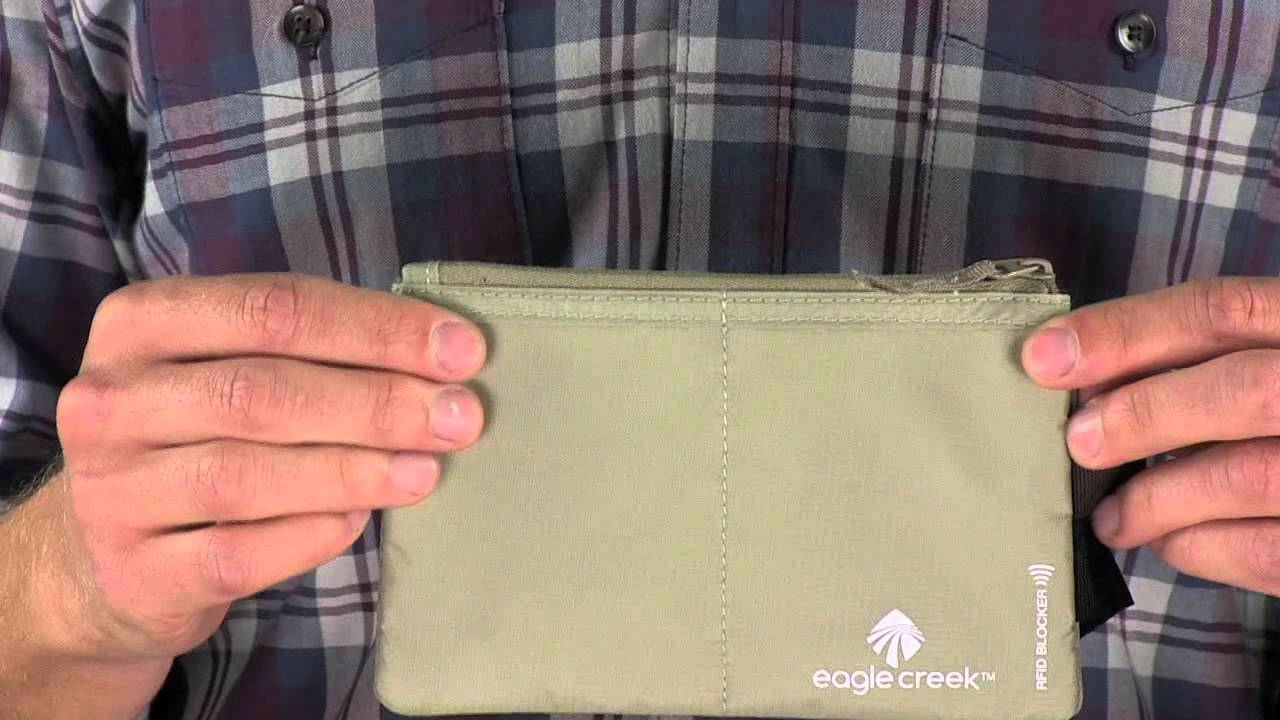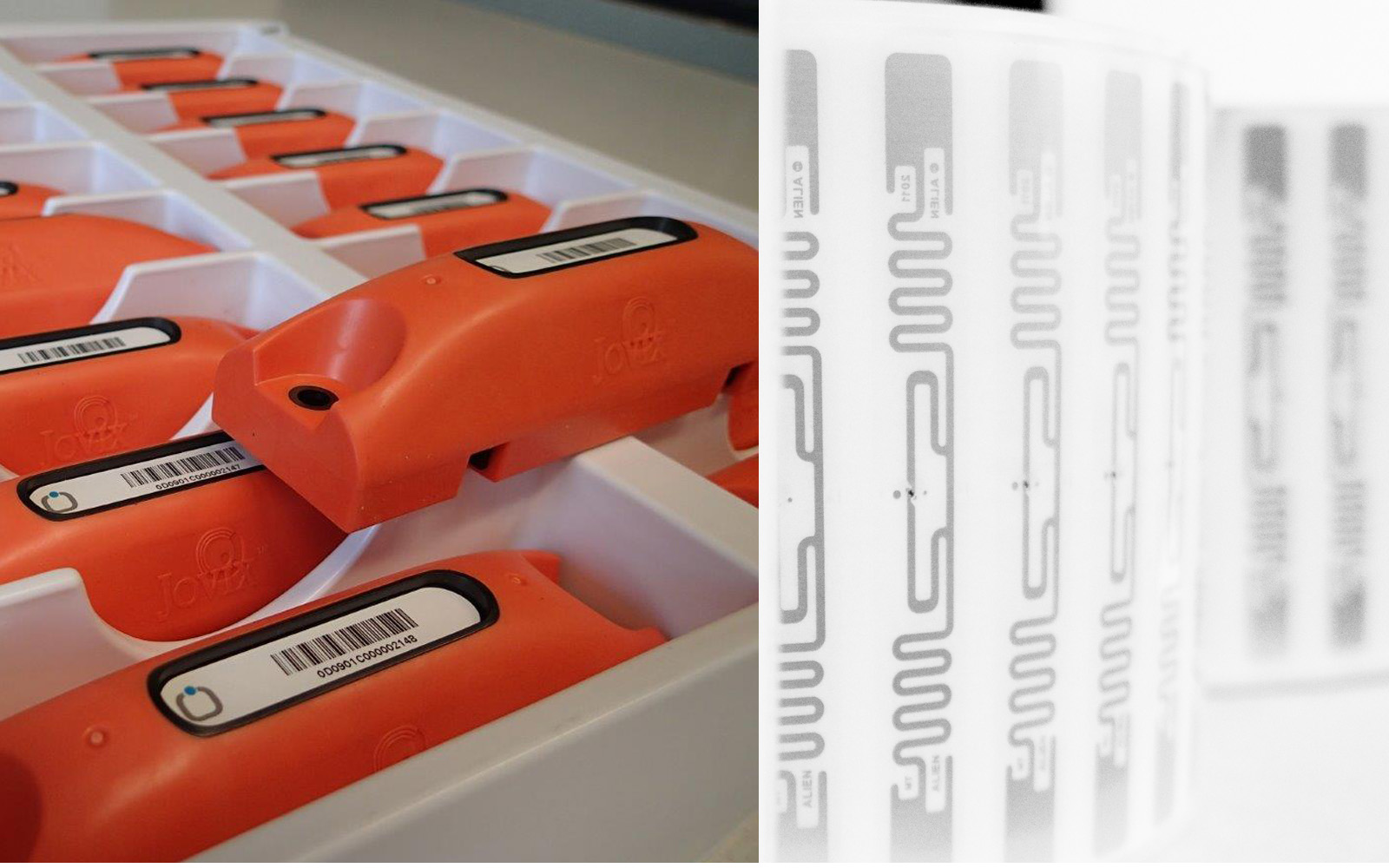Introduction
Have you ever wondered how to remove an RFID tag from your clothing? Well, you’re not alone. Many people are becoming increasingly concerned about their privacy and the potential risks associated with RFID technology. RFID, which stands for Radio Frequency Identification, is a technology used to electronically track and identify items. These tags are commonly found in various products, including clothing, to enable inventory management or product tracking. However, some individuals may have reservations about the presence of RFID tags on their garments and prefer to remove them for various reasons.
In this article, we will explore the reasons why you might want to remove an RFID tag from your clothing and provide you with several methods to accomplish this task. Whether you have privacy concerns or simply find the presence of these tags inconvenient, we will guide you through the different techniques you can use to safely eliminate RFID tags from your garments.
It is important to note that removing an RFID tag can be a delicate process and may void any warranties or guarantees on the product. Therefore, proceed with caution and ensure that you are comfortable with the potential consequences before attempting any of the methods discussed here. Let’s dive right in and explore the various methods you can employ to remove RFID tags from your clothing items.
What is an RFID tag?
Before delving into the methods of removing RFID tags from clothing, it is important to understand what an RFID tag is and how it functions. RFID, or Radio Frequency Identification, is a technology that uses electromagnetic fields to automatically identify and track tags attached to objects. These tags, also known as transponders or labels, contain electronically stored information that can be read remotely.
RFID tags consist of a microchip and an antenna. The microchip stores the unique identification code or data associated with the item, while the antenna enables communication with an RFID reader. When an RFID reader emits radio waves, the antenna on the tag picks up the signal and powers up the microchip. The microchip then sends the stored information back to the reader through the antenna, allowing the reader to identify and track the tagged item.
There are two main types of RFID tags: active and passive. Active RFID tags have an internal power source, such as a battery, which allows them to transmit information without relying on the reader’s power. Passive RFID tags, on the other hand, do not have their own power source. Instead, they rely on the radio frequency energy provided by the reader to power up and transmit data.
RFID technology has numerous applications across various industries. It is commonly used in supply chain management, inventory control, asset tracking, and access control systems. In the retail industry, RFID tags are often embedded in clothing items and accessories to enable efficient inventory management and prevent theft. These tags can store information such as the product type, size, color, and price, making it easier for retailers to track their merchandise and streamline operations.
While RFID technology offers several benefits, such as improved efficiency and accuracy in inventory management, some individuals have concerns about the potential privacy and security implications. RFID tags have the ability to transmit data wirelessly, which raises questions about unauthorized tracking and data collection. Additionally, there have been instances of RFID tags being used to counterfeit products or compromise personal information. These considerations may drive individuals to seek methods of removing RFID tags from their clothing items.
Why would you want to remove an RFID tag?
There are several reasons why you may want to remove an RFID tag from your clothing. While these tags provide convenience and efficiency in certain applications, some individuals have valid concerns that prompt them to seek their removal. Here are a few common reasons why you might want to remove an RFID tag:
Privacy Concerns:
One primary reason individuals choose to remove RFID tags is to protect their privacy. RFID technology allows for the wireless transmission and reception of data, which can potentially be intercepted or accessed by unauthorized parties. Some people feel uncomfortable with the idea of their personal information being tracked and collected without their consent.
Data Security:
Another concern is the security of the stored data on the RFID tags. Personal information, such as credit card numbers or identification details, can be vulnerable to identity theft or data breaches if accessed by malicious individuals. By removing the RFID tags from clothing items, individuals can mitigate the risk of such sensitive information being compromised.
Aesthetics:
RFID tags are often visible on clothing items and can detract from the overall aesthetic appeal of the garment. Some people may find the presence of these tags distracting or unaesthetic, especially if they are trying to achieve a particular look or style.
Inconvenience:
RFID tags can cause inconvenience for individuals in certain situations. For example, they may set off security alarms when passing through certain checkpoints or cause issues when trying to remove anti-theft devices at home. Additionally, individuals who prefer minimalistic or non-intrusive clothing may find the presence of bulky RFID tags bothersome and opt to remove them.
It is important to note that removing RFID tags may have legal or warranty implications, depending on the specific circumstances. It is always recommended to check the terms and conditions associated with the product or consult with the manufacturer before attempting to remove the tags.
Methods to remove an RFID tag from clothing
If you have decided to remove an RFID tag from your clothing, there are several methods you can employ to accomplish this task. It’s important to proceed with caution and ensure that you are comfortable with the potential consequences before attempting any of these methods. Let’s explore some common techniques for removing RFID tags from clothing:
Method 1: Cutting or tearing the tag off
One straightforward method is to simply cut or tear the RFID tag off the clothing item. Depending on the tag’s placement and attachment, you can carefully use scissors, a knife, or your fingers to detach it. This method is quick and easy, but it may damage the garment or leave behind remnants of the tag that could still be functional.
Method 2: Removing the tag with a strong magnet
Another method involves using a strong magnet to deactivate or detach the RFID tag. By placing the magnet near the tag’s antenna, you can disrupt the communication between the tag and the reader, rendering it inactive. However, this method is not guaranteed to work on all RFID tags, as some are specially designed to resist magnetic interference.
Method 3: Using an RFID tag remover
There are specialized RFID tag removers available in the market that are specifically designed to remove these tags without damaging the clothing. These removers use a combination of cutting and pulling mechanisms to safely detach the tag from the garment. They are typically easy to use and provide a more efficient and precise removal process. However, it’s important to ensure that you choose a reliable and reputable RFID tag remover to avoid damaging your clothes.
Method 4: Drowning the tag in water
Some people have reported success in removing RFID tags by submerging them in water for an extended period. The theory is that the water immersion can damage the tag’s circuitry and render it inoperable. However, this method can be time-consuming, and there is no guarantee of its effectiveness. Additionally, it may not be suitable for all types of clothing materials, and there is a risk of damaging the garment through extended exposure to water.
Method 5: Freezing the tag to break it
Freezing the RFID tag is another method that some individuals have claimed to be successful in disabling or breaking the tag. By placing the garment with the tag in a plastic bag and freezing it, the idea is that the extreme temperature change may cause the tag’s components to contract and break. However, like other methods, success may vary, and caution should be exercised to prevent any damage to the fabric or other parts of the clothing.
Before attempting any of these methods, it is essential to consider the legal implications and potential damage that could occur to the garment. Always exercise caution and consult the manufacturer or seek professional advice if you are unsure.
Method 1: Cutting or tearing the tag off
One of the most straightforward methods to remove an RFID tag from clothing is by cutting or tearing it off. This method is relatively quick and easy, but it does come with some potential drawbacks. Here’s how you can go about removing the RFID tag using this method:
Step 1: Identify the RFID tag – Locate the tag on the clothing item. Most RFID tags are discreetly placed inside a seam or hidden in a label. The tag may be sewn onto the garment or attached using adhesive.
Step 2: Assess the attachment method – Determine how the RFID tag is attached to the clothing. Some tags may be sewn on, making it easier to cut them off, while others may be secured with adhesive, requiring a careful tearing process.
Step 3: Gather the necessary tools – Depending on the tag’s attachment method, you may need scissors, a knife, or your fingers to detach the tag. Ensure the tools are clean and sharp to facilitate a clean removal.
Step 4: Cut or tear off the tag – Carefully cut or tear the tag off the clothing. If using scissors or a knife, be cautious not to damage the fabric. If tearing, gently pull on the tag until it separates from the garment.
Step 5: Inspect and clean – Once the tag is removed, inspect the clothing for any remnants of the tag. Check for any adhesive residue, loose threads, or potential damage. If necessary, use adhesive remover or a lint roller to clean up any leftover residue.
Keep in mind that cutting or tearing off an RFID tag may leave behind remnants of the tag that can still be functional. Although the tag itself may be physically detached, it’s important to understand that the RFID chip may still work and transmit information.
Additionally, this method carries the risk of accidentally damaging the clothing item. If you’re uncertain or concerned about potentially ruining the garment, it’s best to consider alternate removal methods or seek professional assistance.
Lastly, be aware that removing an RFID tag from clothing may violate warranty or return policies, so it’s essential to weigh the benefits and potential consequences before proceeding with this method.
Method 2: Removing the tag with a strong magnet
Another method to remove an RFID tag from clothing is by using a strong magnet. This method aims to disrupt the communication between the RFID tag and the reader, rendering the tag inactive. While this method has been reported to be effective by some individuals, it may not work on all types of RFID tags. Here’s how you can attempt to remove the tag using a strong magnet:
Step 1: Gather a strong magnet – Look for a magnet with a powerful magnetic field. Neodymium magnets or rare-earth magnets are often recommended for this purpose. Ensure that the magnet is clean and free from any metallic debris that can affect its effectiveness.
Step 2: Locate the RFID tag – Identify the placement of the RFID tag on the clothing item. It is typically positioned inside a seam or hidden in a label.
Step 3: Place the magnet near the RFID tag – Bring the magnet close to the RFID tag, specifically near the tag’s antenna. The magnetic field generated by the magnet aims to disrupt the RFID tag’s circuitry and prevent it from communicating with a reader.
Step 4: Hold the magnet in place – Gently hold the magnet in place for a few moments, allowing the magnetic field to interact with the tag. The duration required may vary depending on the strength of the magnet and the sensitivity of the RFID tag.
Step 5: Test the tag – After removing the magnet, test the functionality of the RFID tag. Attempt to read it with an RFID reader to confirm if the tag has been successfully disabled or rendered inactive.
It’s important to note that not all RFID tags will be affected by a strong magnet. Some RFID tags are designed to resist magnetic interference, making this method ineffective. Additionally, the strength of the magnet and the distance from the tag can impact the success of this method. Experimentation and caution are advised when attempting to remove RFID tags with a magnet.
Furthermore, be aware that removing an RFID tag with a strong magnet may leave behind remnants of the tag or damage the fabric. It’s important to assess the risks and potential consequences before using this method. If you’re unsure or concerned about potential damage, it’s best to explore alternative removal techniques or seek professional assistance.
Method 3: Using an RFID tag remover
Using an RFID tag remover is a specialized method for removing RFID tags from clothing. These tools are specifically designed to safely detach the tag without causing damage to the fabric. While they may come at an additional cost, RFID tag removers provide a more efficient and precise removal process. Here’s how you can use an RFID tag remover:
Step 1: Acquire an RFID tag remover – Purchase a reliable and reputable RFID tag remover from a trusted source. Ensure that the remover is compatible with the type of RFID tags you wish to remove.
Step 2: Familiarize yourself with the remover – Read the instructions provided with the RFID tag remover to understand its proper usage. Pay attention to any safety precautions or specific techniques recommended for effective tag removal.
Step 3: Prepare the clothing item – Identify the location of the RFID tag on the garment. Ensure that the area around the tag is clean and clear of any obstructions, such as loose threads or other attachments.
Step 4: Position the remover – Place the RFID tag remover against the fabric, with the tag positioned within the remover’s grip. Make sure the remover securely holds the tag while preventing any damage to the fabric.
Step 5: Activate the remover – Follow the instructions provided with the RFID tag remover to activate its mechanism. This may involve pressing a trigger, squeezing handles, or employing other methods specific to the remover you are using.
Step 6: Detach the tag – Apply steady pressure to the RFID tag remover, allowing it to cut or pull the tag away from the fabric. Be careful not to pull or tug forcefully, as this may damage the clothing.
Step 7: Inspect and clean – Once the tag is removed, inspect the garment for any remnants or residue left behind. Use adhesive remover or a lint roller to clean up any adhesive remnants or loose threads.
Using an RFID tag remover can be a more precise and reliable method compared to other DIY techniques. These devices are designed to minimize the risk of fabric damage and provide a clean removal process. However, it is essential to choose a reputable RFID tag remover and follow the instructions carefully to ensure successful tag removal without causing harm to the clothing item.
If you are unsure about using an RFID tag remover or if you have concerns about damaging the garment, it may be best to seek professional assistance or explore alternative removal methods.
Method 4: Drowning the tag in water
Drowning the RFID tag in water is a method that some individuals have reported as effective for disabling or deactivating RFID tags. The idea behind this method is that prolonged exposure to water can damage the tag’s circuitry and render it inoperable. However, it is important to note that the success of this method may vary, and it may not be suitable for all types of clothing materials. Here are the steps to follow if you want to try drowning the RFID tag in water:
Step 1: Prepare a container – Find a container large enough to accommodate the clothing item and submerge it completely in water. Ensure that the container is clean and free from any contaminants that could potentially damage the garment.
Step 2: Fill the container with water – Fill the container with enough water to fully immerse the clothing item, ensuring that the RFID tag is completely submerged.
Step 3: Submerge the clothing item – Gently place the clothing item with the RFID tag into the container, ensuring that it is fully immersed in the water. Allow the garment to soak for an extended period, typically ranging from several hours to overnight.
Step 4: Remove the clothing item – After the desired soaking time, carefully remove the clothing item from the water. Take care not to damage the garment or cause unnecessary stress to the fabric.
Step 5: Inspect for tag functionality – Once the clothing item is removed from the water, check the functionality of the RFID tag. Attempt to read the tag with an RFID reader to determine if it has been effectively disabled or rendered inactive.
It is crucial to note that this method may not be suitable for delicate garments or those made from materials that could be adversely affected by water exposure. It is also essential to consider potential damage to the clothing itself, such as shrinkage, color bleeding, or fabric distortion, that may occur during water exposure.
Additionally, while this method may be successful for some RFID tags, there is no guarantee of its effectiveness for all tags. Some tags are designed to be water-resistant or may have protective coatings that reduce damage from water exposure. Therefore, it is essential to approach this method with caution and be aware of the potential risks involved.
If you have concerns about damaging the clothing item or if you are uncertain about the water resistance of the tag, it may be more appropriate to explore alternative removal methods or seek professional assistance.
Method 5: Freezing the tag to break it
Freezing the RFID tag is another method that some individuals claim to be successful in breaking or disabling the tag. The idea behind this method is that the extreme temperature change caused by freezing can cause the tag’s components to contract and break. However, it is important to note that the success of this method may vary, and there is no guarantee of its effectiveness. Here are the steps to follow if you want to try freezing the RFID tag to break it:
Step 1: Prepare a sealed plastic bag – Place the clothing item with the RFID tag inside a sealed plastic bag. Ensure that the bag is completely airtight to prevent water or moisture from entering.
Step 2: Seal the bag – Remove as much air as possible from the bag before sealing it tightly. This step is crucial to prevent any potential damage caused by excess air expansion or contraction during freezing.
Step 3: Place the bag in the freezer – Carefully place the sealed bag containing the clothing item into the freezer. Make sure it is positioned in a way that it won’t be crushed or punctured by other items.
Step 4: Freeze the bag – Leave the bag in the freezer for an extended period, typically overnight or up to 24 hours. The prolonged exposure to freezing temperatures aims to cause the tag’s components to contract and potentially break.
Step 5: Remove the bag from the freezer – After the desired freezing time has elapsed, carefully remove the bag from the freezer. Allow it to thaw naturally at room temperature, ensuring that no water or moisture comes into contact with the clothing.
Step 6: Inspect for tag functionality – Once the clothing item has fully thawed, inspect the functionality of the RFID tag. Attempt to read the tag with an RFID reader to determine if it has been disabled or rendered inactive.
It is important to note that freezing the RFID tag may not be suitable for all types of clothing materials. Delicate fabrics or garments with embellishments may be more susceptible to damage or distortion during freezing. Additionally, the success of this method is not guaranteed, as some RFID tags may be designed to withstand extreme temperatures or have protective measures in place.
If you have concerns about damaging the clothing item or if you are uncertain about the tag’s resistance to freezing, it may be more appropriate to explore alternative removal methods or seek professional assistance.
Safety precautions to consider when removing RFID tags
While removing RFID tags from clothing can be a relatively simple process, it is important to take certain safety precautions to avoid any potential hazards or damages. Here are some essential safety guidelines to keep in mind when removing RFID tags:
1. Read manufacturer guidelines:
Before attempting to remove an RFID tag, carefully read the manufacturer’s guidelines and instructions provided with the clothing item. Some manufacturers may discourage or prohibit the removal of RFID tags, and doing so could void any warranties or guarantees associated with the product.
2. Assess clothing material:
Consider the type of material the clothing item is made of. Delicate fabrics or those prone to damage, such as silk or lace, may require more gentle removal methods or professional assistance to prevent fabric distortion or tearing.
3. Use appropriate tools:
If cutting or tearing the RFID tag, ensure that you use appropriate tools such as sharp scissors or a knife. Dull blades may lead to uneven cuts or damage to the fabric. When using tools, exercise caution to avoid accidental cuts or injuries.
4. Protect your fingers:
When removing an RFID tag, be mindful of protecting your fingers. Avoid placing excessive force or pressure on your fingers, as this can result in cuts or injuries. Use tools or implements with a grip to ensure a safe removal process.
5. Beware of sharp edges:
Some RFID tags may have sharp or jagged edges, especially if they have been cut or partially removed. Take care to handle these tags with caution to avoid accidental cuts or punctures.
6. Avoid damaging the garment:
Take precautions to prevent damage to the clothing item itself. Avoid using excessive force or pulling on the fabric, as this can cause fabric tears, fraying, or distortion. Inspect the garment before, during, and after the removal process for any potential damage, and proceed with the removal method accordingly.
7. Consider professional assistance:
If you are unsure or uncomfortable with removing an RFID tag yourself, or if the garment requires specialized care, consider seeking professional assistance. There are professionals who specialize in the removal of RFID tags and can ensure a safe and effective removal process.
By following these safety precautions, you can minimize the risk of injury or damage when removing RFID tags from clothing. Remember to always proceed with caution and assess the potential risks and consequences before attempting any removal method.
Conclusion
Removing RFID tags from clothing items can be a personal choice driven by concerns about privacy, data security, aesthetics, or inconvenience. In this article, we have explored several methods to remove RFID tags, including cutting or tearing them off, using a strong magnet, using an RFID tag remover, drowning the tag in water, and freezing the tag to break it.
It is essential to approach the removal process with caution and consider the potential risks and consequences. Always read manufacturer guidelines to understand any warranties or guarantees associated with the product. Assess the clothing material and choose removal methods that are appropriate and safe for the fabric. Use the right tools and protect your fingers from cuts or injuries. Additionally, be mindful of potential damage to the garment during the removal process.
While some methods, such as cutting or tearing the tag off or using a strong magnet, may be accessible and simple, they may not completely disable the RFID tag. Specialized tools like RFID tag removers offer a more efficient and precise removal process. However, they come with an additional cost.
Methods like drowning the tag in water or freezing it have been reported to have varying levels of success. However, these methods may not be suitable for all clothing materials, and results cannot be guaranteed. It is crucial to consider the potential risks and damage to the clothing before attempting these methods.
Ultimately, the decision to remove an RFID tag from clothing should be made based on personal preferences, concerns, and the specific circumstances. If you have any doubts or concerns about the removal process, it is always advisable to seek professional assistance or contact the manufacturer for guidance.
Remember, the removal of an RFID tag may have legal implications or impact warranties, so it’s essential to understand the potential consequences before proceeding. By taking appropriate precautions and making an informed decision, you can safely remove RFID tags from your clothing and address your specific concerns.







